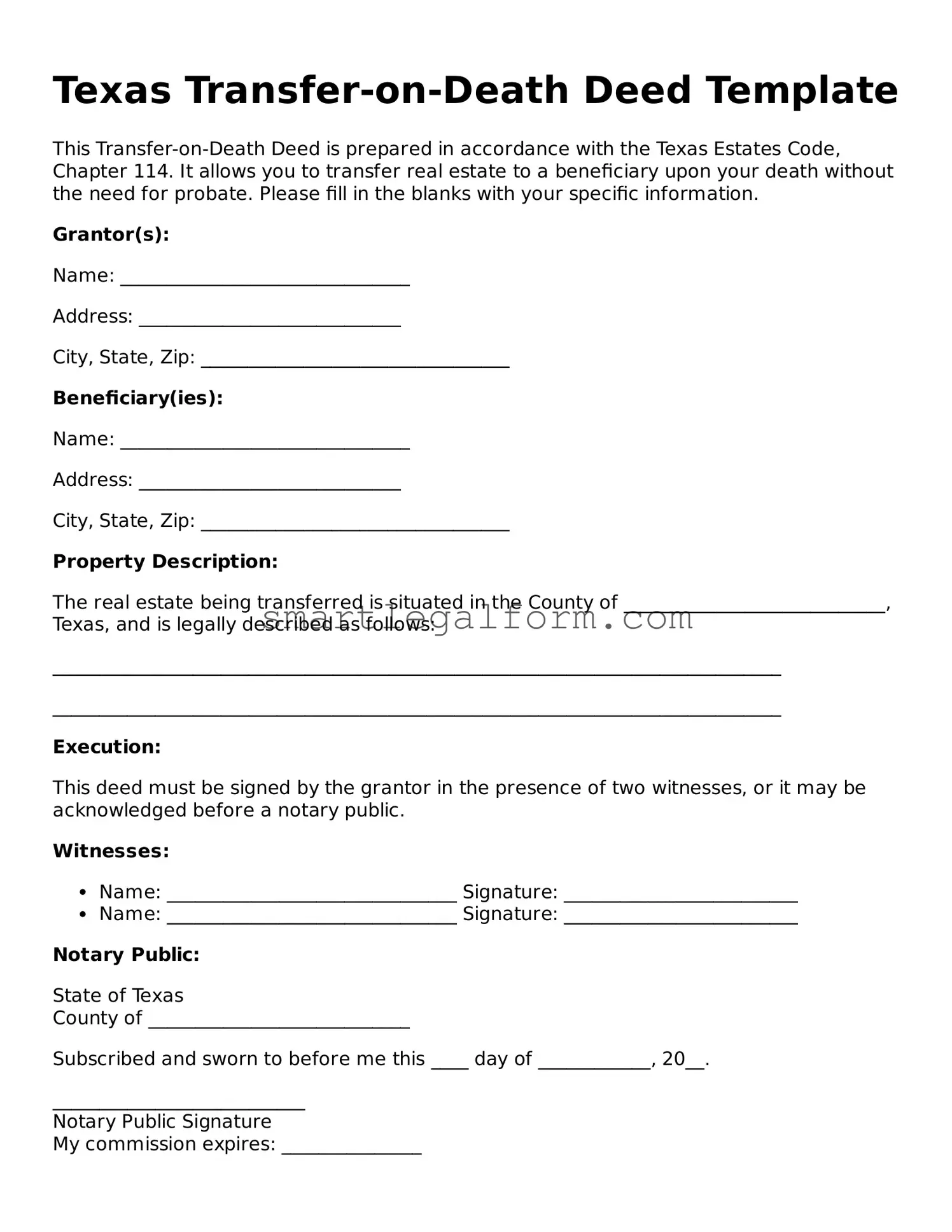Texas Transfer-on-Death Deed Template
This Transfer-on-Death Deed is prepared in accordance with the Texas Estates Code, Chapter 114. It allows you to transfer real estate to a beneficiary upon your death without the need for probate. Please fill in the blanks with your specific information.
Grantor(s):
Name: _______________________________
Address: ____________________________
City, State, Zip: _________________________________
Beneficiary(ies):
Name: _______________________________
Address: ____________________________
City, State, Zip: _________________________________
Property Description:
The real estate being transferred is situated in the County of ____________________________, Texas, and is legally described as follows:
______________________________________________________________________________
______________________________________________________________________________
Execution:
This deed must be signed by the grantor in the presence of two witnesses, or it may be acknowledged before a notary public.
Witnesses:
- Name: _______________________________ Signature: _________________________
- Name: _______________________________ Signature: _________________________
Notary Public:
State of Texas
County of ____________________________
Subscribed and sworn to before me this ____ day of ____________, 20__.
___________________________
Notary Public Signature
My commission expires: _______________
Recording Information:
This document must be recorded in the county where the property is located to be effective. Please check with your local county clerk's office for further instructions.
It is advisable to seek legal counsel to ensure that this deed meets all requirements and accurately reflects your intentions.
